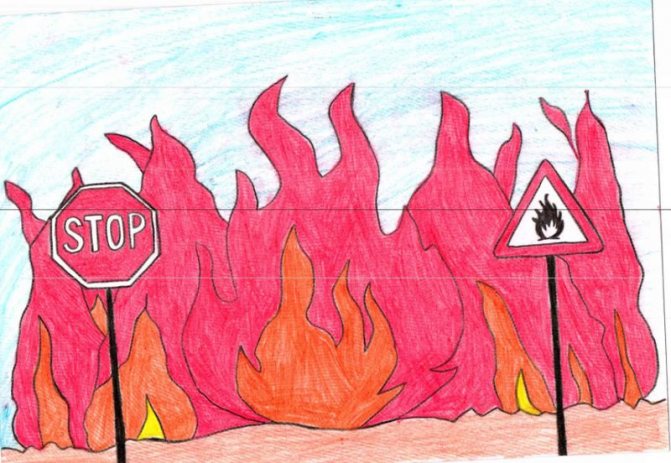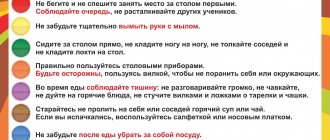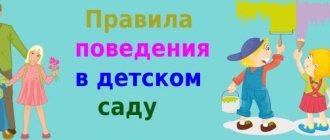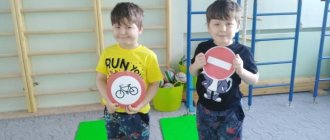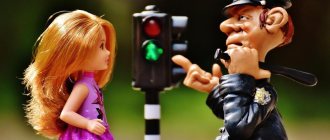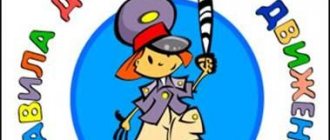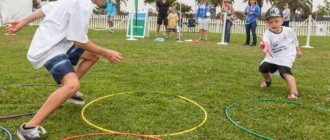Are there any rules of behavior for children on public transport? The question is far from idle. Firstly, any transport is a zone of increased danger for any person, and even more so for a child. And secondly, many children absolutely do not know how to behave in transport. They run, jump, make noise, climb onto seats in their shoes, it happens that they paint the interiors of buses and trolleybuses with all sorts of designs, break and even cut chairs with knives... A familiar picture, isn’t it? And the most important and terrible thing is that young passengers often endanger their lives and even the lives of other passengers.
Alas, there are no rules specifically written for children on how they should behave on public transport. There are approved rules for all passengers in general, regardless of age. But, of course, children are not interested in them. And therefore, parents need to further explain to their young brats how they should behave on trams, trolleybuses, buses and other types of public transport. Let's talk about this in more detail.
How to get on and off public transport
There are special rules in this regard that children need to know.
- You must wait for a bus, trolleybus or other means of transporting passengers in special places - at stops. Trying to stop it in some other places is wrong. This can create an emergency situation and, as a result, put the life of the child and other people at risk.
- You should only get on a bus or tram when it has completely stopped. Jumping into open doors while walking is prohibited.
- If the vehicle is full, it is better to wait for the next one.
- Before entering a bus, tram, etc., you must wait until other passengers get off.
- You should board the bus slowly, without jostling or trying to get ahead of other passengers.
- Once on the bus, you should not stop at the door (unless you need to get off at the next stop). It is necessary to go deeper into the cabin to make room for exiting passengers.
- There is no need to push and break through to the exit of the vehicle first. You need to go out decorously and calmly, observing the order.
- After getting off the bus (tram, trolleybus), you need to wait until it leaves and only then cross the street.
- You should always remember and follow the golden rule, which states that the tram should be walked around in front, and the trolleybus and bus - behind.
Summary of a drawing lesson in the senior group of kindergarten. Traffic rules
Drawing lesson in the senior group on the topic “Traveling according to the rules of the road”
Program content: - To consolidate children’s knowledge about warning, prohibitory, prescriptive, informational road signs and service signs. — Exercise the ability to schematically depict road signs using various visual materials (paints, colored pencils, felt-tip pens, gel pens). — To develop spatial orientation skills, the skills of conscious use of knowledge of traffic rules in everyday life. — Develop attention and creative imagination of children. Preliminary work: - conversation “Road signs”; — familiarity with road signs in everyday life. — didactic games: “Our Street”, “Put a Road Sign”, “Traffic Light”, “Guess Which Sign”; — reading fiction on the topic of traffic rules; Materials for the lesson: - damaged road signs;
- paper of different formats; - paints, colored pencils, felt-tip pens. Course of the lesson
Surprise moment Knock on the door. Traffic Light comes to visit the children for a lesson. Traffic light: Guys, I came to you for help. The fact is that I live in a magical land, everything was fine with us, but one day the Confusion Fairy sent a mischievous whirlwind. He stole all the road signs and threw them into a deep ravine at the edge of the country. Residents found road signs, but they are in such poor condition that they are simply a disaster. Not a single sign now looks like itself, I’ll show them to you now (hangs out “damaged” road signs, gives time to examine the signs). Accidents began to occur in the city, pedestrians fell under the wheels of cars, cars could not cross a railway crossing, wild animals were afraid to cross the road through the forest, pedestrians quarreled with drivers, passengers could not understand where the “food point” was and where the “maintenance point” " Guys, help us, please correct our signs. Educator: Shall we help the residents of the Magic Land? Children: Yes! Educator: Okay, but first we’ll repeat once again what road signs exist and what they mean, and the Traffic Light will listen to us and tell us his opinion. Children's stories about road signs. Traffic light: Well done, guys, everything is right! But what should we do with “damaged” signs? Educator: Don’t worry, Traffic Light, we will help you, the children will draw you existing signs that will help the inhabitants of the Magic Land in life, right, guys? Children: Yes! Educator: We will divide into three groups; The first group will draw warning signs, the second group will draw prohibitive signs, and the third will draw informational and service signs. Children are divided into groups and distribute among themselves who will draw which signs. Independent work of children, during which the teacher provides individual assistance, tips, and reminds them of the ways and techniques of drawing. Educator: Are you finished, guys? Traffic light, look, did our children complete the task? Traffic light: Thank you guys, I have to go. Goodbye. Educator: You did a good job, completed the task, and whose signs and stories about them did you like the most? Analysis and self-analysis of children - Well done, did you like the lesson? Who came to visit us? What did we do today? In the next lesson we will continue to familiarize you with the rules of the road.
We recommend watching:
Summary of a lesson in kindergarten in the senior group on traffic rules. Notes of a lesson on traffic rules in the senior group. Reflective elements Summary of a game lesson on traffic rules in kindergarten. Senior group Summary of a lesson in kindergarten on traffic rules with design elements. Senior group
Similar articles:
Summary of a lesson on traffic rules in the senior group on the topic “Transport World”
Summary of a lesson on traffic rules in the senior group on the topic “Road signs”
Traffic rules lesson. Road signs. Senior group
How to behave while driving in a vehicle
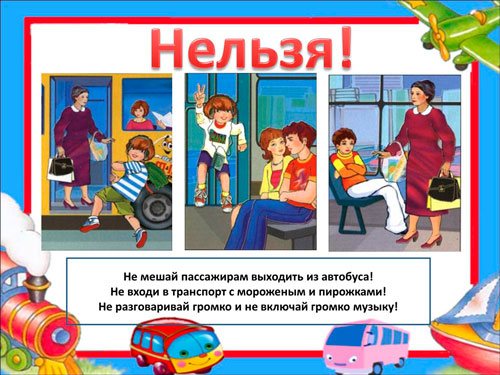
There are also rules on this matter.
- You must not make noise, play loud music, push, run around the cabin or cause other inconvenience to passengers.
- Transporting combustible, flammable and sharp objects on public transport is prohibited. It is also prohibited to transport objects and substances that could stain other passengers.
- It is prohibited to distract the driver while the vehicle is moving.
- You cannot lean out of windows when traffic is moving.
- While moving, you should hold on to the handrails or straps to avoid falling.
- If possible, while driving it is better to stand facing the direction of travel of the bus or trolleybus.
- If you need to transport an animal on a bus, you should remember that they are transported according to certain rules. Cats and birds are kept in special cages, and dogs must be muzzled and on a leash.
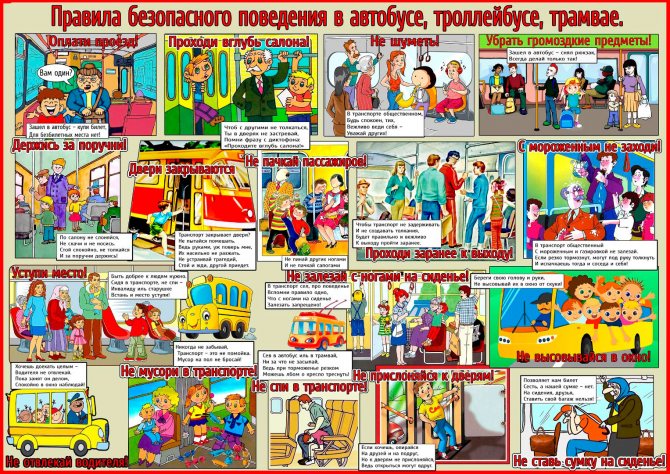
When entering a bus, tram or trolleybus, you must remove your backpack or bag and place it in a place where it does not interfere with other passengers.- While on a bus, you should not shake snow or raindrops off your clothes, as they will certainly fall on other passengers and cause them inconvenience.
- While in the cabin, you should give up your seat to the elderly, disabled, women with small children or with a heavy load.
- You must pay for the fare or have a document ready that allows you to travel for free, so that you can present it to the controller at any time.
- If the bus is crowded, you should try your best not to cause inconvenience to other passengers, and apologize if any inconvenience was caused.
- If there is nothing to hold on to in a crowded vehicle, and a child is holding an object, you should ask the seated passengers to hold it. There is no need to be shy here, this is in the order of things, and will in no way violate the rules of travel.
- But looking at passengers point-blank, making faces at them, looking at their phones or books, leaning on them is indecent, and, moreover, often leads to misunderstandings and conflicts. Therefore, it is better not to do any of the above.
- Of course, you cannot be rude to other passengers - even in response to rudeness on their part.
- You must not dirty or damage the seats or other parts of the interior of a bus, tram or trolleybus.
- Of course, you can’t touch other people’s things (even touch them), otherwise, what’s good, the child may be mistaken for a thief.
- In addition, on the bus it is not customary to comb your hair, clean your nails, eat cakes or ice cream, discuss your problems loudly on the phone or in a conversation with other passengers, or laugh loudly.
- You need to prepare for the exit in advance (especially if there are a lot of people in the cabin). At the same time, you should not fight your way to the doors, pushing aside other passengers. This should be done delicately and politely, asking the passenger in front if he is getting out, and if he is not getting out, then offer to change places with him.
How to behave on trains
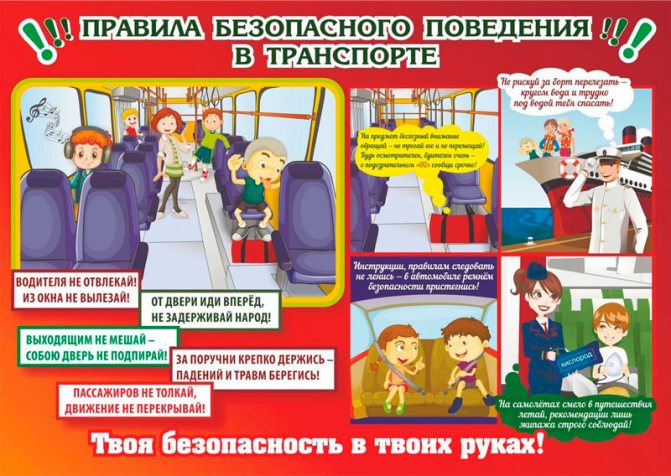
There are also specific rules of behavior here.
- You should behave decently in the carriage, without disturbing order or causing inconvenience to other passengers and conductors. However, children do not travel on trains independently, but only accompanied by adults, so responsibility for the behavior of children lies with mothers, fathers or other accompanying persons. And if a child forgets and begins to behave incorrectly in the carriage, the parents must immediately pull him back and explain exactly how to behave.
- If adults are not around for some reason, the child must remember the following rules of behavior:
- do not come close to the cars until the train stops;
- do not lean against the carriages - even if the train is not moving;
- do not open the doors and windows of the carriage while moving and even when the train is stopped;
- do not lean out of doors and windows;
- do not interfere with the closing of the carriage doors;
- do not touch the stop valve;
- do not disturb passengers when boarding or disembarking.
How to behave on water transport
In this case, in addition to the generally accepted rules listed above, there are some specific rules. It is forbidden:
- board or disembark the ship until it has completely moored to the pier and the gangway has been opened;
- come close to the side of the vessel - especially without adult accompaniment;
- enter the ship's areas where there are no fences;
- enter technical and office premises;
- hang over the side.
As for behavior on an airplane, everything is relatively simple. Children never fly unaccompanied by adults - this is prohibited by special transportation rules. Therefore, during the trip, the child must follow all the instructions and comments of the adult and, accordingly, forget about any independence. An airplane is not a vehicle where children are allowed any kind of freedom.
Drawings on the topic of fire safety for schoolchildren
At school age, children already know the basic fire safety rules. They know that they cannot leave turned on household appliances or gas unattended.
Especially in primary schools of grades 1 - 4, we can remind you once again that matches are not a toy for children and you should not leave an unextinguished fire in the forest. But also in 7th grade, children can happily draw interesting drawings on the topic of fire safety.
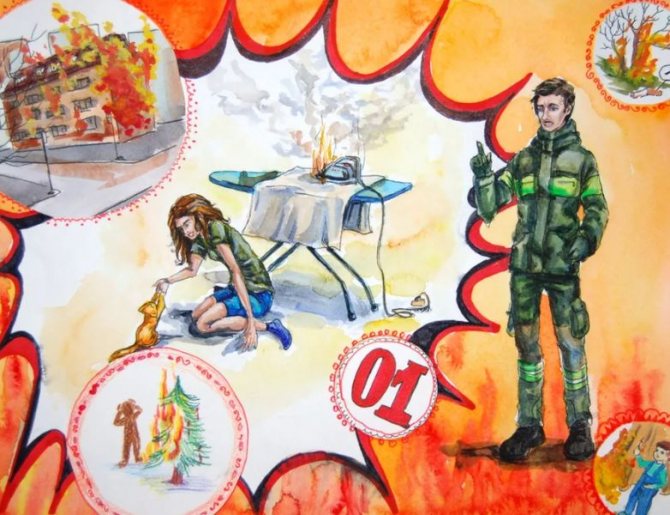
A very informative drawing was drawn by high school students, where the rules of handling fire and the use of fire are still relevant. Don’t be distracted, because the world is so interesting and you want to pay attention to everything.
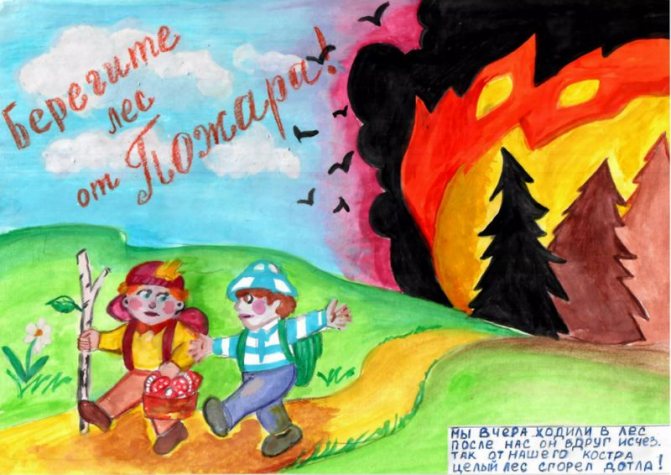
In the spring-autumn period, when trips to nature are relevant, adults are obliged not only to teach children how to make a fire correctly, but also to set an example that after a walk it is necessary to extinguish the fire and check that there are no smoldering coals.
Otherwise, such a vacation could turn into disaster for forest dwellers and even the entire forest. In drawings you can create stories, convey emotions and anxieties, as well as the consequences of improper handling of fire.
